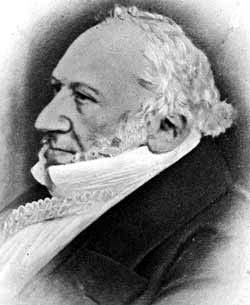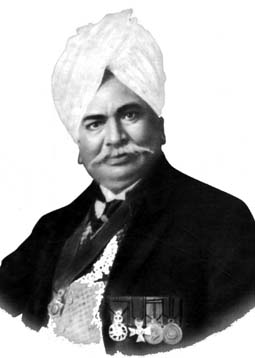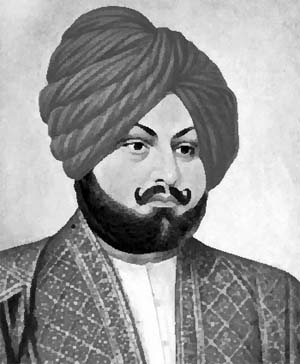Jan 01, 2026
Jan 01, 2026
by H.N. Bali
“Think And Thank” – Part II
Continued from “On Learning to Cope with Setbacks”
“…The one thing that is at the root of all evils in India is the condition of the poor…. My noble Prince, this life is short, the vanities of the world are transient, but they alone live who live for others, the rest are more dead than alive.” - Swami Vivekananda in a letter from Chicago to the Maharaja of Mysore
Meaningfully relating to others is indeed one of the therapies to cope with setbacks in life. It not only makes you more attuned to the reality of the human condition but also gives you the courage to deal with the situation you’re in. Simultaneously, it makes a difference – howsoever tangentially – to the lives of those less fortunately placed in life than you are.
Isn’t it one of the ironies of life that as and when we’re doing well in life we tend to reconcile to the world around us unquestioningly? For instance, living in a tiny island of comparative comfort in a sea of misery around, it hardly occurs to us: What are our obligations to those around us? Have we done our little bit to alleviate the suffering of others?
Towards Welfare State
You’ll recall how, in October-November 1942, the Second Battle of El Alamein stalled the Axis advance into Egypt. This victory of Gen. Montgomery turned the tide in the North African Campaign and ended the Axis threat to Egypt and the Suez Canal. If El Alamein revived the military morale of the Allies, another development boosted the psychological moral of people by highlighting the hope that were fighting to bring into being a more equitable social order. I’m referring here to the famous 1942 report Social Insurance and Allied Services (known as the Beveridge Report) which served as the basis for the post- World War II welfare state put in place in the UK, under Attlee’s leadership, by the Labour government elected in 1945? Lord Beveridge famously identified five “Giant Evils” in society, namely, squalor, ignorance, want, idleness, and disease.
The report went on to propose widespread reform to the system of social welfare to address these after the war. That was the foundation and promised a reward for the sacrifices undertaken by everyone. The post-war reforms envisaged in the Report included the expansion of National Insurance and the creation of the National Health Service.
Think of the left-overs
 Have you ever run into a name Montefiore or rather Moses Montefiore, or to go by his full name Sir Moses Montefiore, and a distinguished citizen honored by the reigning monarch of Great Britain? In all likelihood, No! Nor had I for that matter till of late. He belongs to a bygone age.
Have you ever run into a name Montefiore or rather Moses Montefiore, or to go by his full name Sir Moses Montefiore, and a distinguished citizen honored by the reigning monarch of Great Britain? In all likelihood, No! Nor had I for that matter till of late. He belongs to a bygone age.
After retiring from thriving business in 1824, Montefiore devoted the rest of his exceptionally long life – he lived to complete 100 – to philanthropy. In business, he was an innovator, investing in the supply of piped gas for street lighting to European cities via the Imperial Continental Gas Association. He was among the founding consortium of the Alliance Life Assurance Company, and a Director of the Provincial Bank of Ireland. Highly regarded by his contemporaries, he was elected as Sheriff of the City of London in 1836, and knighted by Queen Victoria in 1837.
However, what he did and, more importantly, what urged him to do that defies the limitations of time. And before I proceed further to talk of Sir Moses’ pioneering work, a word or two about the every- man-for- himself- and- the- Devil- take- the- hindmost society we’ve chosen to create and live with, howsoever begrudgingly. Before the emergence of the socialist ideology and its steadfast stand for some form of equity in social relationships, the orientation towards the left-overs of the society, invariably was callous apathy or condemnation to live on others’ charity. And there’s no society, including the prosperous Western pockets of opulence, which doesn’t have its quota of those who couldn’t make it in life’s rat race. All this is the by-product of the Acquisitive Society we created. That’s also the name of the monumental book authored by R. H. Tawney almost a century ago – actually in 1920. Tawney criticizes the selfish individualism of modern industrial societies. He argues how capitalism corrupts via the promotion of economic self-interest, leading to aimless production in response to greed and insatiable acquisitiveness, and hence to perversions of industrialism. In Tawney’s words:
This doctrine... implies... that the individual enters the world equipped with rights to the free disposal of his property and the pursuit of his economic self-interest, and that these rights are anterior to, and independent of, any service which he may render. True, the service of society will, in fact, it is assumed, result from their exercise. But it is not the primary motive and criterion of industry, but a secondary consequence... It is not the end at which economic activity aims, or the standard by which it is judged, but a by-product, as coal-tar is. (p.20)
Tawney further diagnosed the disease of our civilization which affects the American society the most
It assures men that there are no ends other than their ends, no law other than their desires, no limit... Thus it makes the individual the center of his own universe, and dissolves moral principles into a choice of expediences. And it... relieves... the necessity of discriminating between... enterprise and avarice, energy and unscrupulous greed, property which is legitimate and property which is theft, the just enjoyment of the fruits of labor and the idle parasitism of birth or fortune... and suggests that excess or defect, waste or superfluity, require no conscious effort of the social will to avert them, but are corrected almost automatically by the mechanical play of economic forces.
Montefiore, in his day, was a witness to the emergence of system which led to the rise of such societies. In 1884, a “Home for Chronic Invalids” was founded and named after then still-living 100-year-old Jewish philanthropist Sir Moses Montefiore. This institution, undertook to care for patients so infirm that other hospitals refused to admit them, eventually grew into Montefiore Medical Center.
When Sir Moses was knighted by Queen Victoria, he chose the motto “Think and Thank” to be part of his Coat of Arms. I narrated the above to explain the choice of the theme of the piece with which I resumed writing in these columns.
Understandably, the loss of a faculty set me thinking about the condition in which I may have to live the rest of my time on new terms and conditions. It would indeed be dishonest of me to deny fits of self-pity and feeling of diminishing of self-esteem. Fortunately, I also was the recipient of very sane and practical advice from my family, my friends and my well-wishers. Even if I slip into moods of depression, I just pull myself out by thinking of positive things. A time-honored saying or piece of advice is “Count your blessings.”
Our own society had its own Moses Montefiores who did a lot for the society around and its left-overs. May I mention just two whose work I’ve studied in some detail? They are Sir Ganga Ram and Sardar Dyal Singh Majithia.
Ganga Ram
 My contemporaries would be familiar with the man and the memorable work of Sir M. Visveswaraya, the late Dewan of Mysore state and a great engineer. Ganga Ram was giant of his time that Visveswaraya must have tried to emulate in his own time.
My contemporaries would be familiar with the man and the memorable work of Sir M. Visveswaraya, the late Dewan of Mysore state and a great engineer. Ganga Ram was giant of his time that Visveswaraya must have tried to emulate in his own time.
In 1873, a successful civil engineer working with Punjab P.W.D decided to devote himself, of all things, to practical farming. He obtained on lease from Government 50,000 acres (200 km²) of barren, un-irrigated land in Montgomery District of the then undivided Punjab. (In 1978, the Pakistan Government changed the name of Montgomery District to Sahiwal District.) Within three years he wrought a miracle. He converted that vast desert into smiling fields, irrigated by water lifted by a hydroelectric plant and running through a thousand miles of irrigation channels, all constructed at his own expense. This was the biggest private enterprise of the kind, unknown and unthought-of in the country before. Sir Ganga Ram earned millions most of which he gave to charity.
He was then leased another 40,000 acres of higher ground land for a period of seven years, which he was able to irrigate successfully once again. He constructed a hydro-electric station on the Bari Doab Canal, and was able to complete his project within the time limit given to him. By 1925, he had constructed 75 miles of irrigation channels, 625 miles of water courses, 45 bridges, 565 miles of village roads, and 121 miles of boundary roads, all at his own cost – the list of his achievements is endless.
Altogether 89,000 acres of waste land had been developed successfully by this miracle worker. By now he was 70, and in 1922 he was recommended for a richly deserved knighthood by the then Governor of Punjab, Sir Edward Maclagan.
Later in life Ganga Ram was appointed assistant engineer in the British civil administration and built all the important buildings on the majestic Mall Road on Lahore. These edifices include Lahore Museum, Punjab University, Government College, Punjab High Court, and, above all, Ganga Ram Hospital. Later in his life, he spent much of his wealth on building homes for the widows, destitute children and such other noble ventures.
Partition took Lahore to Pakistan and triggered a communal hysteria on unprecedented scale. Hindus and Sikhs were targeted in areas that eventually went to Pakistan and Muslim blood was spilled in areas they were vacating. History bears no repetition here. A riotous mob was seen stoning the statue of Sir Ganga Ram on a public square in Lahore. A rioter climbed up the pedestal and was seen putting a garland of shoes around the statue’s neck. The police who arrived at the scene, opened fire and some of the miscreants were injured. One among them was the man who had climbed up the pedestal. Someone in the riotous mob shouted: “Let’s take him to Sir Ganga Ram Hospital”.
Celebrated Urdu short story writer Saadat Hasan Manto, whose birth centenary we are observing this year, spun the short story titled ‘The Garland’ around the incident and highlighted the meaninglessness of dividing a country on the basis of religion. Manto had the uncanny knack of indulging in dark humor and doing it without batting an eyelid. He would dissect social hypocrisies and demolish reputations without even the slightest prick of the conscience.
Dayal Singh
 Another giant of his times was Sardar Dyal Singh, the only child of the famous General Lehna Singh Majithia. He lost his parents at the age of six. He got his early education in the Mission School at Amritsar and was later self-educated.
Another giant of his times was Sardar Dyal Singh, the only child of the famous General Lehna Singh Majithia. He lost his parents at the age of six. He got his early education in the Mission School at Amritsar and was later self-educated.
He took up business in real estate and diamonds and earned huge wealth. He was the first president of the Indian Association of Lahore and continued in that capacity till his death. He was a founding Trustee of the Sadharan Brahmo Samaj.
He was Chairman, Board of Directors of the country’s first indigenous bank, the Punjab National Bank. The Bank was founded on May 23, 1894 (its first meeting was held at Dayal Singh’s house). At the second meeting on May 27, 1894, Dayal Singh was appointed Chairman and Harkishan Lal was Secretary of the Board. He was also a pillar of the Brahmo Samaj and donated liberally for educational institutions and libraries, including numerous colleges all over Upper India, like Dayal Singh College, Lahore and Dayal Singh Memorial Library, Lahore. We have the counterparts of both the College and the Library in New Delhi. In his day he was closely associated with Punjab University. Most importantly, he also founded The Tribune newspaper (now HQ in Chandigarh).
Raja Rammohun Roy’s greatest follower in north India was Dayal Singh, in whose person the two strands (of Western ideas and Indian thought) seem to have been fused. Born nine years after Ranjit Singh’s death and fifteen years after Rammohun Roy’s demise, this scion of the family that helped Ranjit Singh carve out a Sikh kingdom was one of the greatest Brahmos in the Punjab.
Do Something
Here in brief are the lives of some – only some – of those who were trailblazers in the art of living for others. And let’s not forget everyone can contribute his mite to the uplift of the deprived. Remember what Vivekananda said:
The poor in the West are devils; compared to them ours are angels, and it is therefore so much the easier to raise our poor. The only service to be done for our lower classes is to give them education, to develop their lost individuality. Give them ideas – that is the only help they require, and then the rest must follow as the effect. Ours is to put the chemicals together, the crystallization comes in the law of nature.
03-Aug-2014
More by : H.N. Bali

|
We are beholden to you for this great service,sir. You have inspired us all to do our best for the betterment of those less fortunate and under privileged among us. May boloji.com keep motivating the world with such excellent information eternally! Thanks to Rajender Kishen sir and his wonderful team that keep the embers glowing. regards. |

|
Thanks for letting us know these great men. |